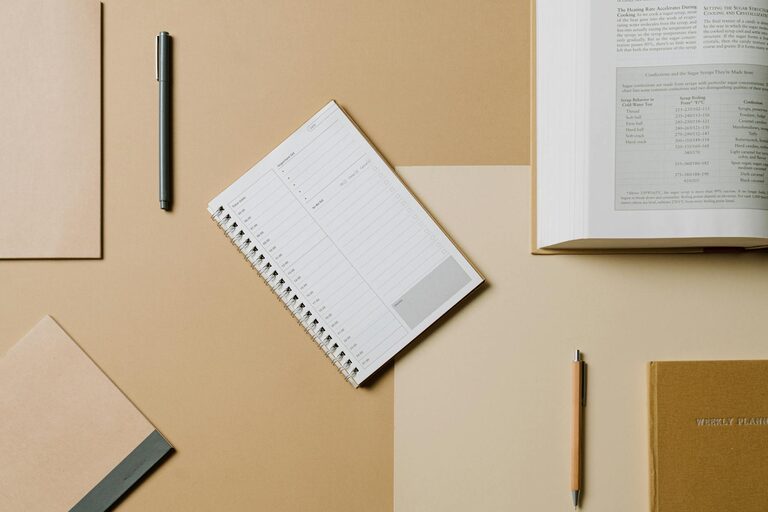Bullet journaling has become a popular way to combine creativity and organization in a personalized planner. Whether you want to manage your tasks, track habits, or simply jot down ideas, a bullet journal can be tailored to suit your lifestyle. If you’re new to bullet journaling and wonder where to begin, this beginner guide will walk you through everything you need to know to start your own journal successfully.
What Is Bullet Journaling?
Bullet journaling is a flexible system for tracking your goals, tasks, events, and thoughts in one place. It was created by Ryder Carroll as a way to organize your life simply yet effectively using bullet points, symbols, and an adaptable structure. Unlike traditional planners, bullet journals can be customized fully, making it both a practical and creative outlet.
Why Start a Bullet Journal?
Starting a bullet journal can help you:
– Stay organized and keep track of your tasks and appointments
– Boost productivity by setting clear goals
– Reflect on your habits and personal growth
– Express creativity through layouts, colors, and decorations
– Reduce stress by having a clear overview of your priorities
What You’ll Need to Get Started
You don’t need fancy tools to start bullet journaling. Here are the basics:
– A notebook: Dotted or grid notebooks work well, but any notebook will do.
– Pens: Choose a pen you enjoy writing with. Many people like fineliners or gel pens.
– Optional supplies: Colored pens, markers, ruler, stickers, or washi tape for decoration.
The beauty of bullet journaling is that you can start simple and add creative elements as you go.
Basic Components of a Bullet Journal
1. Index
The index is like a table of contents. It helps you quickly find logged pages by listing the page numbers and titles. Leave the first 2-4 pages for the index.
2. Future Log
This section is for events and tasks planned months ahead. Divide the page into sections labeled with future months and jot down important dates.
3. Monthly Log
Your monthly log gives an overview of the month. It usually includes:
– A calendar or list of dates
– Monthly goals and priorities
4. Daily Log
Daily logs are where you record tasks, events, and notes for each day. This section is versatile and can be adapted daily depending on what you need to focus on.
5. Collections
Collections are themed pages about a specific topic like books to read, habit trackers, meal plans, or project ideas. Collections make bullet journals highly customizable.
How to Use Bullet Journal Symbols
Symbols help you identify the type of entry at a glance. Some commonly used symbols include:
– Task: • (dot)
– Completed Task: X
– Migrated Task: > (moved to another day)
– Event: O (circle)
– Note: – (dash)
Feel free to create your own symbols or adapt existing ones to suit your style.
Step-by-Step Guide to Your First Weekly Setup
- **Reserve your Index pages:** Number the pages in your notebook and label the first few as the index.
- **Create a Future Log:** Draw a simple grid with the next 3-6 months. Add important dates or appointments.
- **Set up the Monthly Log:** Write the name of the month. Create a calendar or list dates with space to add tasks and events.
- **Design your first Weekly or Daily Log:** Start with today’s date. List tasks, events, and notes using bullet points and symbols.
- **Add a habit tracker or mood tracker:** Track daily habits or moods to reflect on your progress.
- **Index your pages:** Add your new pages to the index with page numbers.
Tips for Staying Consistent with Your Bullet Journal
– Keep your journal in a place you see often
– Set aside a few minutes each day to update your journal
– Start simple—don’t worry about creating perfect art when beginning
– Experiment with layouts to find what works best for you
– Use it as a tool, not a chore—adapt as needed to fit your lifestyle
Inspiration for Bullet Journal Layouts
– Minimalist style: Focus on clean lines, simple fonts, and limited colors.
– Artistic style: Use drawings, stickers, and colors to decorate pages.
– Themed pages: Organize collections around goals like fitness, reading, or budgeting.
– Mood trackers: Color code your daily moods to identify patterns.
– Gratitude logs: Jot down things you’re thankful for regularly.
Common Mistakes to Avoid
– Trying to do too much at once—start small and expand gradually.
– Comparing your pages to others—bullet journaling is personal, so focus on what works for you.
– Overloading each page—leave white space to prevent feeling overwhelmed.
– Forgetting to review and update regularly.
Final Thoughts
Bullet journaling is a fun, flexible way to take control of your time and goals. There’s no right or wrong way to do it—your bullet journal should reflect your style and needs. By starting simple and building your system as you learn, you’ll find a rewarding balance between productivity and creativity. So grab a notebook, a pen, and start your bullet journaling journey today!
Happy journaling!

